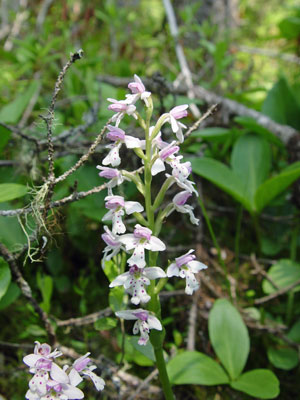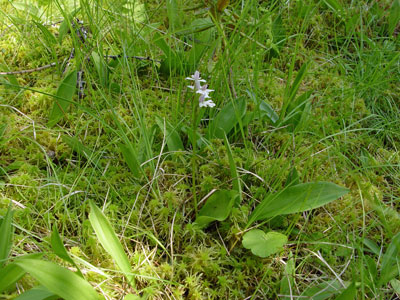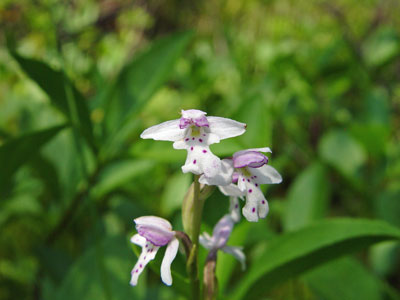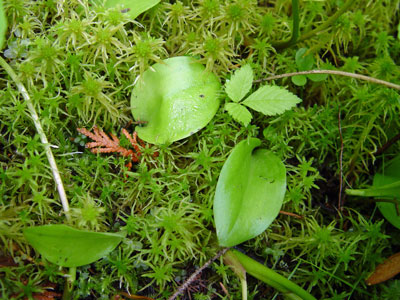DACF Home → Bureaus & Programs → Maine Natural Areas Program → Communities, Plants, and Animals → Rare Plants → Amerorchis rotundifolia
Amerorchis rotundifolia (Banks ex Pursh) Hultn

Small Round-leaved Orchis
- State Rank: S2
- Global Rank: G5
- State Status: Threatened
Habitat: Mossy calcareous swamps and woods. [Forested wetland; Open wetland, not coastal nor rivershore (non-forested, wetland)]
Range: Circumboreal, south to northern New England, Wisconsin, Minnesota, and Montana.
Aids to Identification: This orchid is identified by a spike of 2-6 rose colored flowers, each 13-15 mm long. Each flower has a white lip spotted with purple (see illustration). The single basal leaf is oval or round and 4-11 cm long.

Ecological characteristics: Circumboreal species, usually found in association with cedar.
Phenology: Flowers June - July.
Family: Orchidaceae
Synonyms: Galearis rotundifolia (Banks ex Pursh) R.M. Bateman; Habenaria rotundifolia (Banks ex Pursh) Richards.; Orchis rotundifolia Banks ex Pursh.
Known Distribution in Maine: This rare plant has been documented from a total of 12 town(s) in the following county(ies): Aroostook, Piscataquis.

Reason(s) for rarity: At southern limit of range; scarcity of calcareous habitat.
Conservation considerations: Logging in the cedar bogs in which this orchid is found may, if properly conducted, not be harmful to the plant. Partial canopy removal could provide increased light to mimic the natural openings in which the plant is usually found. Complete canopy removal, however, would likely bring more drastic habitat changes that could be detrimental. Orchids are popular among some speciality gardeners, and populations of this species are vulnerable to unscrupulous or uneducated collectors . Plants dug from the wild usually do not survive; more importantly, removing these plants harms the natural population and may cause its eventual disappearance. This plant has not been successfully propagated, and any plants offered for sale have almost certainly been dug from the wild.
For more information, see the Native Plant Trust's Conservation Plan for Amerorchis rotundifolia.
